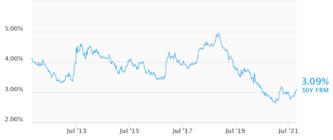
Despite the lack of comps, the borrowers were upset with JVM and wanted to take their loan to another loan officer who had explained that he was a “direct lender.”
While that may have been clever selling on the part of the loan officer, it was also both misleading and amusing – because JVM is a direct lender, and probably more “direct” than that loan officer’s firm.
WHAT IS A DIRECT LENDER?
A direct lender is an entity that lends its own funds, but there are many nuances to this.
Agents and borrowers prefer to work with direct lenders because direct lenders ostensibly don’t charge “middle man” fees and because they have more control over the process.
In contrast to a direct lender is a “mortgage broker” who originates loans and packages loan files but then submits them to unaffiliated third party lenders for underwriting and funding.
NUANCES OF DIRECT LENDING
I. Portfolio lender vs. Mortgage Bank
Both portfolio lenders and mortgage banks are direct lenders, but portfolio lenders retain their loans while mortgage banks sell all of their loans.
While portfolio lenders only make up a small portion of the residential mortgage market, they are more “direct” than a mortgage bank because they can establish their own underwriting standards with less rigidity (although down payment and many underwriting guidelines are more strict because portfolio lenders have more “skin in the game”).
JVM is part of a mortgage bank that has to adhere to strict Fannie, Freddie, FHA, VA and jumbo underwriting standards to ensure we have “salable loans.” As a reminder, mortgage banks fund all of their loans on a large line of credit called a “Warehouse Line.” Mortgage banks have to sell all of the loans they fund on the secondary market to make money and because their warehouse line providers demand it (loans are not allowed to “sit” on a warehouse line like a credit card balance).
Mortgage banks dominate the mortgage market now because they can move much faster than portfolio lenders, they can handle far more loan volume, they often offer lower rates, and they can access a much wider variety of loan programs with smaller down payment requirements among other things.
II. Delegated vs. Non-Delegated Underwriting
This is the key distinction. Our current mortgage bank is very large and well-capitalized, and, as a result, we have “delegated authority” to underwrite every loan we fund in house. In contrast, we were previously affiliated with a smaller mortgage bank that did not have delegated authority to fund various types of loans, including many jumbo loans.
Hence, while our previous mortgage bank was still a “direct lender” in the sense that it funded all loans with its warehouse line, it was not 100% direct because it had to rely on outside investors to underwrite some of its jumbo loans.
For example, if our previous mortgage bank wanted to sell a jumbo loan to Wells Fargo Bank, it would have Wells Fargo underwrite the loan. The mortgage bank would then fund the loan on its warehouse line and then turn around and sell it to Wells Fargo. This was somewhat cumbersome but that is how non-delegated relationships work; smaller mortgage banks without delegated authority lose many of the advantages of being a direct lender, including speed, lower rates and more control over the process.
III. Appraisal Control
This is another key distinction, as many jumbo investors that buy loans from mortgage banks often require appraisal reviews every time or they require mortgage banks to use their designated appraisal panel.
Because our current mortgage bank is so large and well-capitalized, we have much more appraisal control than we used to with our previous mortgage bank – when we were forced to use specific appraisers required by our jumbo investors. Now, we can use our own appraisers initially for jumbo loans (a huge advantage), but we still have to order formal appraisal reviews for our best jumbo loans – giving us less control over the process overall.
Anyway – all this is to say that direct lenders are “less direct” when they don’t have control over the appraisal process, and the smaller the lender/mortgage bank, the less control it typically has.
CONCLUSION
So, is direct lending the be-all, end-all? For us, yes! We could never offer our low rates, our multitude of loan programs or our 14-day closes if we were not a direct lending mortgage bank.
I might add though that this is not to disparage savvy brokers, as I know many who are so skilled at packaging strong files and nurturing strong relationships with wholesales lenders that they are able to circumvent many issues that result from not being direct. JVM was in the broker channel for years for this very reason and only left b/c we wanted more control over the process (to offer fast closes) and more appraisal control.
Jay Voorhees
Founder/Broker | JVM Lending
(855) 855-4491 | DRE# 1197176, NMLS# 310167























